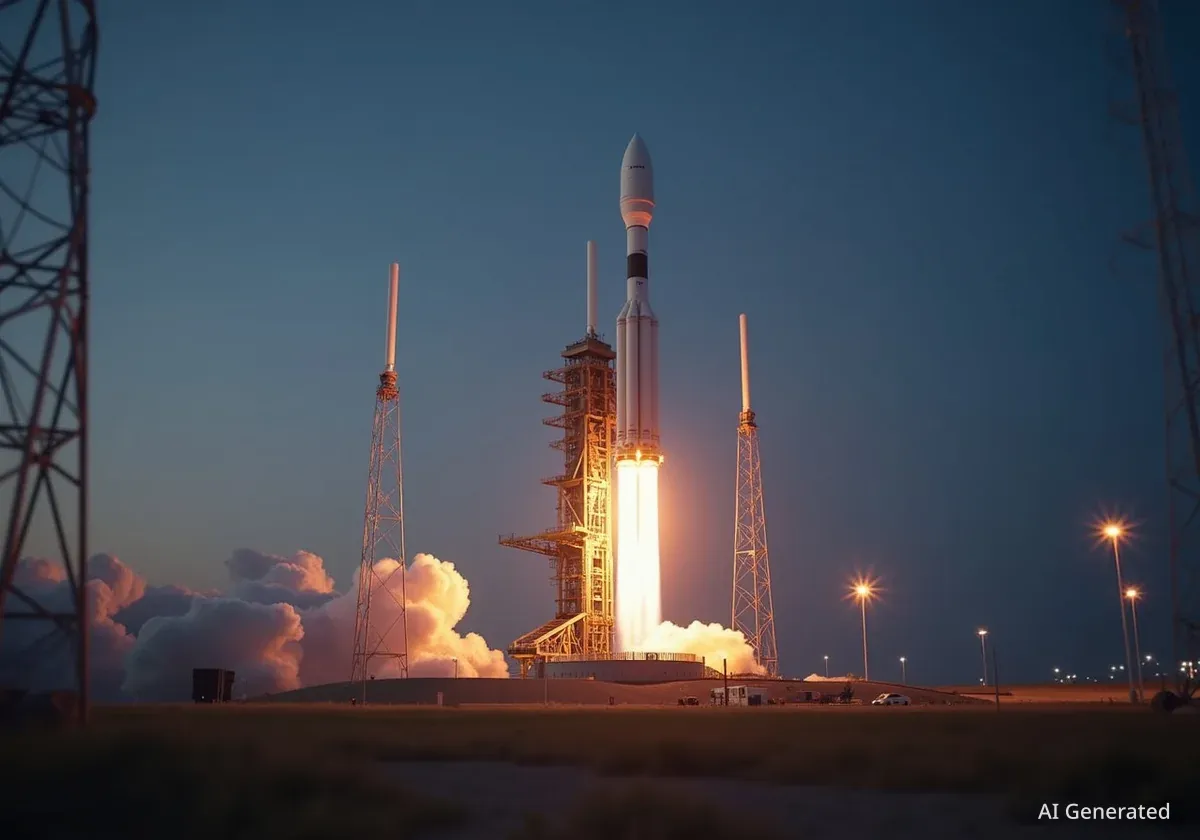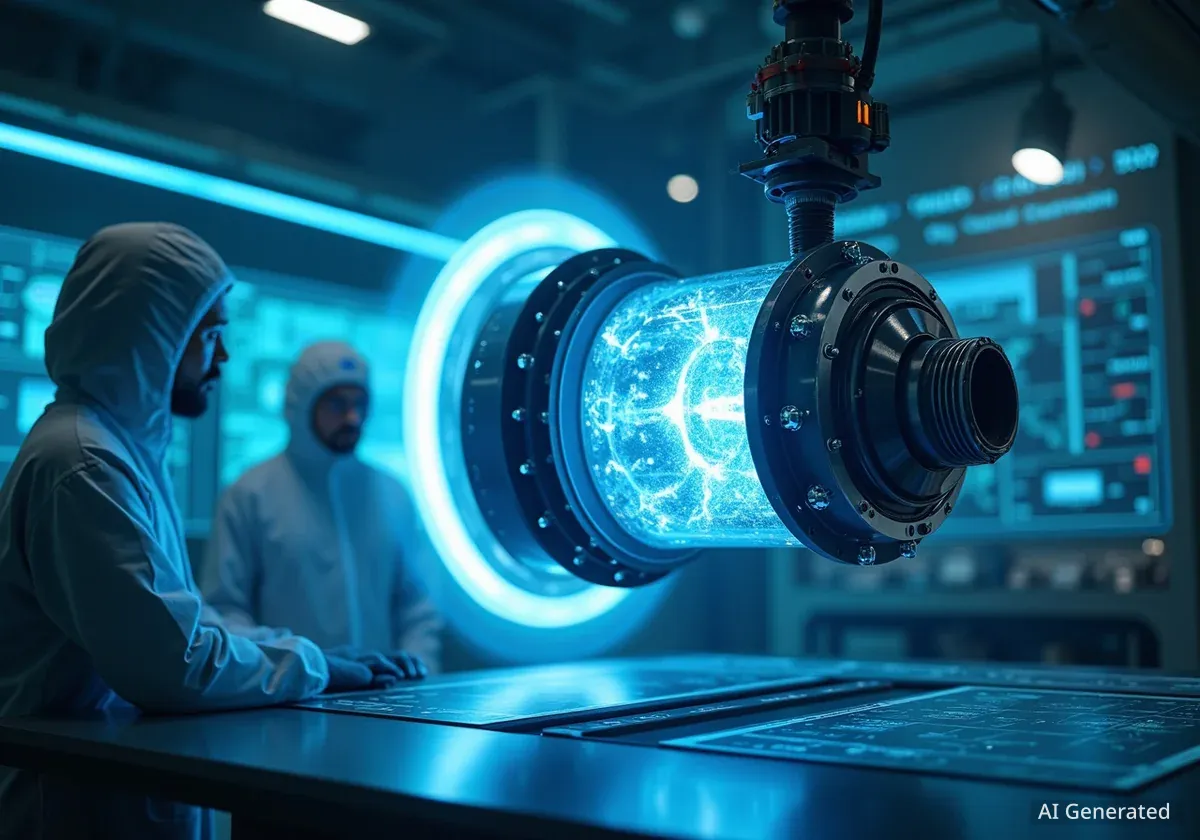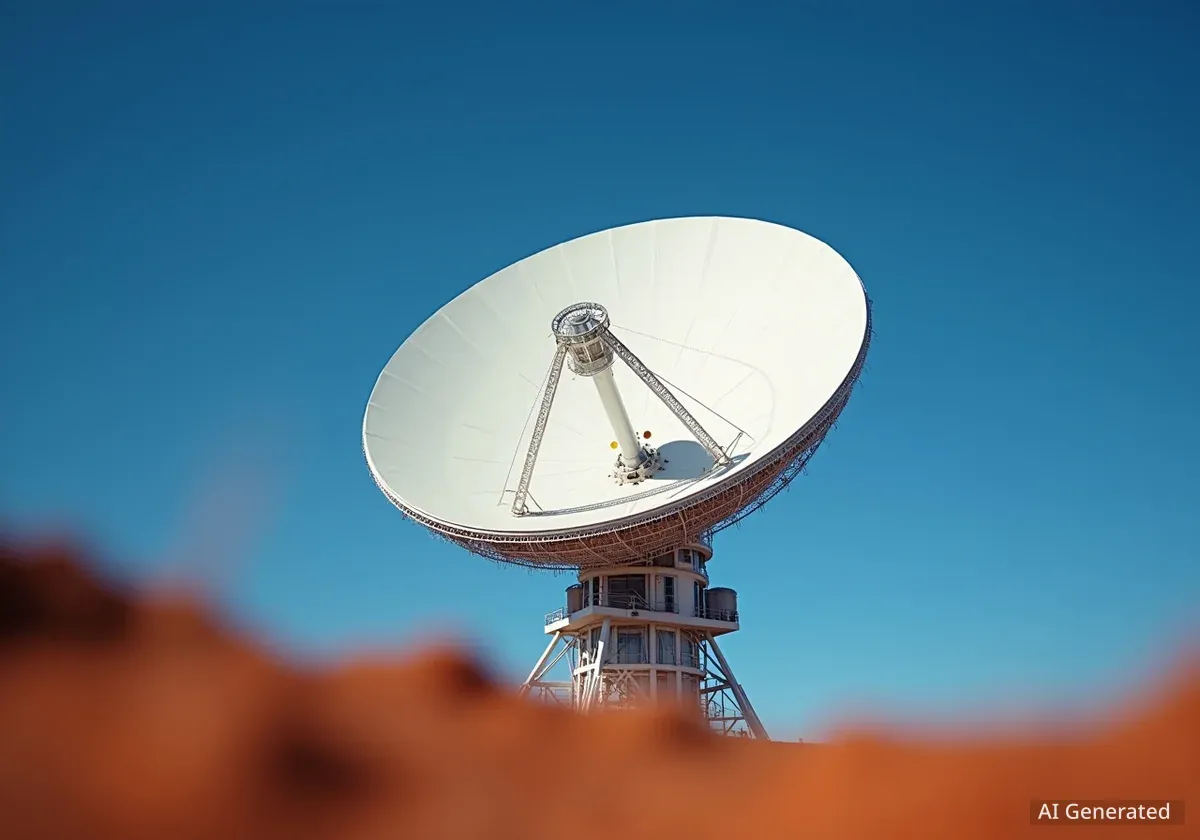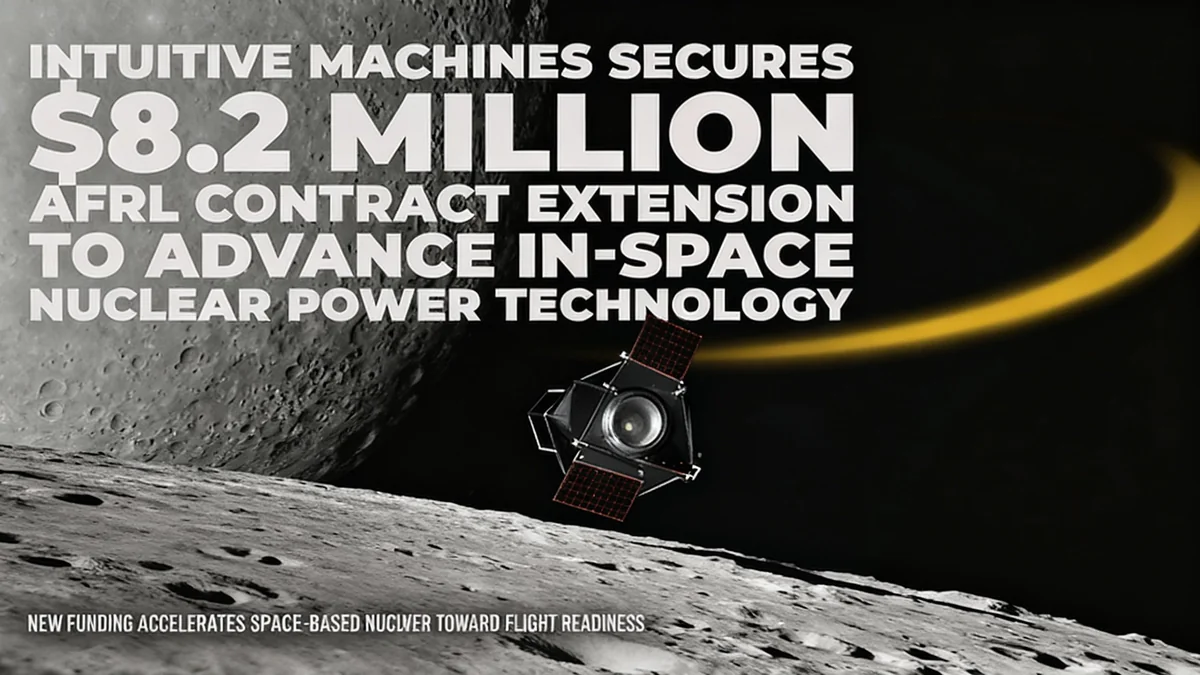Satellite manufacturer K2 Space has announced a mission scheduled for 2027 that will use a single SpaceX Falcon 9 rocket to deploy three spacecraft into three distinct orbital regimes. This initiative, named Trinity, is designed to demonstrate the capabilities of the company's versatile satellite platform across low Earth orbit (LEO), medium Earth orbit (MEO), and geostationary transfer orbit (GTO).
The mission represents a significant step for the California-based startup, which aims to produce a standardized satellite bus capable of operating in the varied radiation environments of different orbits without extensive customization. This approach challenges the industry standard of building highly specialized platforms for each orbital destination.
Key Takeaways
- K2 Space plans the "Trinity" mission for 2027 on a dedicated SpaceX Falcon 9 launch.
- Three satellites will be deployed to LEO, MEO, and GTO to validate a single, multi-orbit platform.
- The mission follows the 2026 "Gravitas" mission, a U.S. Space Force-funded flight to MEO.
- The company's "Mega" class bus is designed to handle harsh radiation and support 1,000 kg payloads.
The Trinity Mission An Ambitious Orbital Test
The 2027 Trinity mission is structured to provide a comprehensive in-space validation of K2's technology. Two satellites will initially be deployed into low Earth orbit. One of these will remain in LEO for a period before using its onboard propulsion to move to medium Earth orbit.
The second satellite will begin its journey to MEO immediately after deployment, with the goal of completing the orbit-raising maneuver within 90 days. This rapid transfer is intended to showcase the efficiency of its propulsion system.
The third spacecraft will be sent directly to a geostationary transfer orbit, a particularly demanding environment. "GTO is a high radiation environment that’s historically been really hard to operate in," said Karan Kunjur, co-founder and CEO of K2 Space. "We’re going to show our customers and the markets what’s possible with the K2 platform in that orbit as well."
Understanding Orbital Regimes
Satellites operate in different orbits based on their mission. LEO is close to Earth and ideal for high-resolution imaging and low-latency communications. MEO is a middle ground, offering a balance of coverage and latency, used by navigation systems like GPS. GEO is much higher, where satellites match Earth's rotation, appearing stationary from the ground, which is perfect for broadcasting.
Building on Previous and Upcoming Flights
The Trinity mission is not K2's first foray into space. The company has already tested several of its proprietary components, including its flight computer and reaction wheels, during a demonstration flight earlier this year on another company's spacecraft. However, its high-power electric propulsion system has not yet flown.
The Gravitas Mission
Before Trinity, K2 Space will launch its Gravitas mission in 2026. This flight, funded by the U.S. Space Force, will mark the first space journey for the company's "Mega" class satellite. The spacecraft will carry 12 different payloads for both national security and commercial clients.
One of the key objectives of Gravitas is to test the satellite's endurance in the high-radiation conditions of MEO. The mission plan involves the satellite using its two 20-kilowatt thrusters to raise its orbit from LEO to MEO over several months. During this journey, it will pause at various altitudes to collect data on the radiation environment.
According to Kunjur, this data collection is a crucial part of the mission. It will provide valuable information for future operations and for customers planning missions in these regions. SES, a major satellite communications firm, is among the commercial partners on the Gravitas mission, using it as a pathfinder for its own MEO broadband constellation.
K2 Space at a Glance
- Founded: 2022
- Venture Funding: $180 million
- Reported Contracts: $50 million
- Satellite Platform: "Mega" class bus
- Payload Capacity: ~1,000 kilograms
A New Economic Model for Satellite Constellations
K2 Space's core business strategy is built on a simple economic premise. While its individual satellites may be more expensive than some LEO-specific models, the company argues that the total cost of a constellation can be significantly lower by operating in MEO.
"It’s just basic math. There’s fewer satellites required for global coverage as you go up in altitude. It’s straightforward to come up with an altitude at which, if you needed 150 satellites in LEO, you would only need 50 satellites in MEO."
By building a radiation-hardened platform that can survive in MEO and beyond, K2 aims to fill a market gap. The company states that most existing low-cost satellite platforms are not designed for the harsh conditions outside of LEO. K2 offers its bus for a reported $15 million, available for either dedicated missions or as a rideshare platform for multiple customers.
Targeting Government and Commercial Customers
K2 Space reports that the primary customers for the 2027 Trinity mission are already secured. One customer from the 2026 Gravitas mission has purchased an entire satellite for Trinity, and another government client is also returning. The company still has some hosted payload capacity available for customers looking to test hardware in space.
Kunjur noted a trend of customers using these missions iteratively to reduce risk for future, more ambitious projects. "What we’re seeing is interest in taking this iterative approach from our customers to use subsequent missions to buy down risk on future capabilities," he said.
Rethinking Military Acquisition
John Plumb, who previously served as a space policy official at the Pentagon, believes K2's platform could enable the U.S. military to move some national security missions to MEO at a lower overall cost. He is also advocating for changes to military procurement requirements that he argues limit innovation.
Plumb specifically mentioned the Evolved Secondary Payload Adapter (ESPA) rings, a long-standing standard that constrains satellites to smaller form factors. He argues that such legacy requirements prevent the military from taking advantage of larger, more capable commercial platforms like K2's Mega bus.
The company is also positioning its technology for future defense programs, such as the Pentagon's Golden Dome missile defense initiative, which is expected to include space-based sensors. Kunjur stated that the Mega-class satellite is "the exact full size satellite that could be used in future Golden Dome architectures."
A Standardized Platform with Minor Customization
Building a satellite to operate across different orbits has traditionally involved significant redesigns for each environment. K2's goal was to create a single design that could handle the most challenging conditions.
"What we wanted to do was build a single satellite that can handle all three orbits, a single satellite that is designed for the harshest radiation environment," Kunjur explained.
While the platform is highly standardized, some modifications are necessary for the most demanding orbits. The GEO configuration is 95% common with the LEO and MEO versions but is equipped with four thrusters, doubling its power. This 5% difference is what K2 considers the necessary customization to operate effectively in geostationary orbit.





